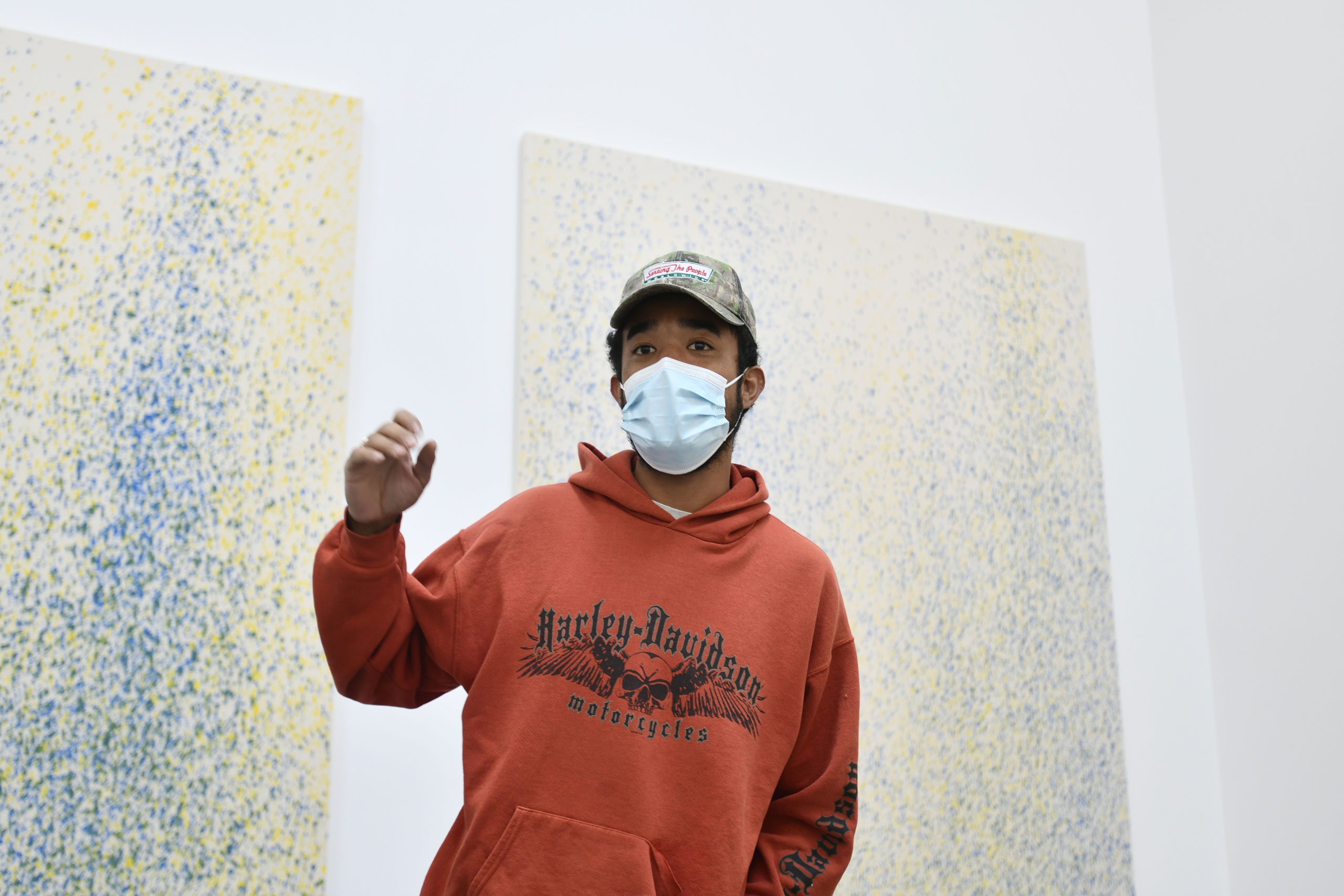
In graffiti circles, a rigged, outdated fire extinguisher is a not only a prized possession, but an artistic tool. Filled with paint instead of water, it can launch colorful pigments dozens of feet into the air, vandalizing virtually any surface without much effort required.
So when abstract painter Lucien Smith manipulated his own repurposed fire extinguisher and turned it loose onto a series of 9-foot-by-7-foot unprimed canvases — and, in 2014, sold one at auction for $372,000, nearly six times its estimate — the art world collectively lost its mind.
His rise through what he called his “Rain Paintings” series would be simultaneously meteoric and disruptive. The New York Times and Vogue named him the “art world wunderkind,” while ruthless critics attempted to tear him down. For a time, it worked.
After Artsy estimated that his work generated $3.7 million that year, Smith took a step back from the New York spotlight in 2015 by retreating to his home and studio in Montauk — disenchanted by dealer and gallery politics, and eager to reconnect with himself.
Five years later, he has done just that, and with poetic justice. Ten of the very same large-scale, controversial “Rain Paintings” are now on view for the first time as a group at the Parrish Art Museum in Water Mill through January. He waited for the right moment to place the paintings, he said, knowing that when they did reappear, they might look radically different to him.
And they do.
“It’s an amazing experience. I’m still kind of shell-shocked from it,” Smith said. “It’s interesting for me because these paintings were made so close to the museum and it’s almost just a full-circle experience. I’m definitely really honored to have the show and I’m still kind of working out, in my head, what actually is going on.”
The body of work, titled “Southampton Suite” for where he created it in 2013, also marks his first-ever solo museum exhibition at just age 31. Looking at the paintings in the Parrish gallery, seven years after making them, feels nostalgic, he said, transporting him back to a time in his life that he barely recognizes.
He had recently finished his studies at the Cooper Union in 2011, where he had already gained attention for his fire extinguisher paintings — a tool he adopted for himself after observing graffiti artists use them in his native New York. “The unintentional off-spray I’ve always, in a way, associated with rain,” he said.
In his quest to replicate nature with manmade tools, he revisited the series in the summer of 2013 while staying as a guest at a Southampton home surrounded by gardens, where he erected a plastic-sealed “Conestoga wagon” to contain the spraying. He played with his distance from the canvas, the paint’s viscosity, solubility and ratios, until he got it right.
But he never anticipated that this final dance with his “Rain Paintings” would be the start of his ascension.
“I just think that, especially these paintings, at an early age, they received some sort of acclaim, but also criticism from the market, and it was a lot to deal with,” he said. “It was my first body of work that I’d made right out of college and to now be here, seven years later, and seeing them hung in a museum show not too far from where I had made them has been a really therapeutic experience and put some more positivity back into painting for me.”
For a time, Smith found himself jaded by the art world as a whole, battling the long-held notions of what it means to be an artist and refusing to play by the industry’s rules, which ruffled feathers, to say the least, as his paintings continued to sell for hundreds of thousands of dollars.
“My work had such success in the auctions that it was attached to a lot of critique on speculation and stuff like that — which really, at my age, was not something I was even thinking about when creating those works,” he said. “So it definitely had an effect on my trajectory as an artist and how I viewed the whole thing.”
In recent years, his attitude has changed, especially through redirecting his energy into his non-profit creative initiative, Serving The People, or STP. It aims to provide a platform for creative inquiry and experimentation for the next generation of artists, he said, and to “protect them from these types of experiences.”
“I think the art world was going through a lot of changes very rapidly and I kind of got caught up in all of that,” he said. “And given some distance and some time, especially having this show, has allowed me to find some more inspiration, motivation to continue pursuing art.”
Still untethered to one specific dealer or gallery, Smith works independently, which has afforded him the freedom to develop STP and pursue other creative endeavors, including a feature film in the making and opening a studio in East Hampton, where he anticipates he will revisit painting after deserting it for some time.
“I’m very excited and this Parrish show is like a silent ‘hurrah!’ for me, he said. “Painting has, for me, been a roller coaster. It’s brought me, obviously, a tremendous amount of good, but also some negative feelings and some self-questioning. I think after this show, I definitely have had more inclinations to want to continue painting and want to push that ball forward and not completely abandon that part of my practice.”
Lucien Smith will discuss his first solo museum exhibition, “Southampton Suite,” during a live-streamed talk with Chief Curator Alicia G. Longwell on Friday, October 2, at 5 p.m. at the Parrish Art Museum in Water Mill, as part of the “Friday Nights Live!” series. The public is invited to join the talk, which can be accessed online only (no onsite audience) at parrishart.org. The exhibition will remain on view through January 2021.